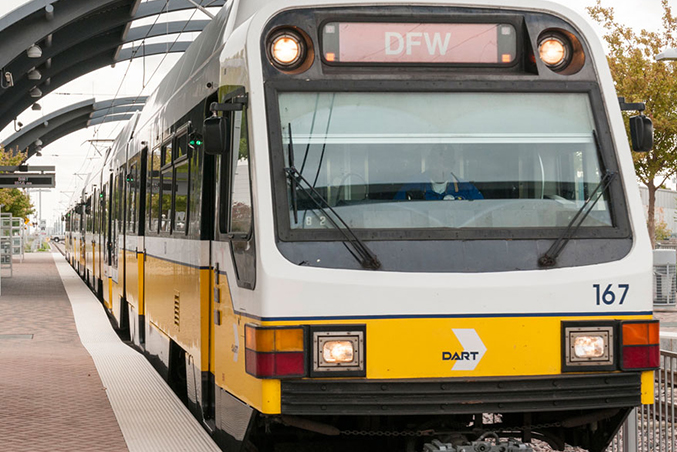In the incessant, round-the-clock, anxiety-ridden coverage of the 2020 elections, one policy position that doesn’t get much attention is mass transit. That makes a certain amount of sense. After all, transit is largely considered a local matter—planned and paid for by local governments and agencies. But there’s an interesting video on Vox that breaks down how and why, in the future, politics at the federal level could play a better role in improving mass transit in American cities.
The video report points to the $1.5 trillion infrastructure bill that was passed back in July by the Democratic-controlled House of Representatives (the Senate never took it up). Historically, when Congress has funded public transit, those programs have targeted transit system capital improvements. The July bill, however, showed a shift in that approach. For example, the bill provides funding for creating more flexible paratransit, expanding grants for reducing fares for low-income riders, and creates new tools for investing in transit-oriented housing.
It may not seem like much on the surface, but this is a big shift. Even a few years ago, Democrat efforts to invest in transit replicated the same general schemes for funding new miles of rail or expanding transit system capacity. But the real need, particularly in cities like Dallas, has been in finding ways to fund better service, not capital investment.
DART has benefited from federal investment in local transit. During the Obama administration, two grant programs—the TIGER grants and FTA’s Capital Investment Grants Program—had a big impact on DART’s development. A TIGER grant was used to fund the Oak Cliff Streetcar project and DART has been tangled for years in the FTA core capacity grant application process for a handful of projects, including second downtown light rail alignment (called D2) and light rail platform extensions. But neither the streetcar nor the platform extensions have done much to impact the number of people who use public transit in Dallas (which has plummeted even further during the pandemic).
But when DART began its effort to reimagine its bus system—to try to improve the system’s reliability and efficiency in order to improve the service and increase ridership—there were no similar federal funding programs to support those efforts. In fact, the agency is so cash strapped—particularly since it took out a $908 million federal loan to fund the construction of the Cotton Belt Line—it has been forced to figure out ways to fund the increase of bus frequency on certain routes only by finding savings by reducing redundancies elsewhere in the system.
This is a classic example of how well-meaning federal policies intended to improve access to public transportation actually only reinforce historical challenges in improving public transit. The ample availability of federal funding for capital projects—whether it be the grants DART seeks to build D2 or the debt provided to build the Cotton Belt—have facilitated a kind of thinking within the agency that seeks to improve the system by chasing federal funding for big projects. One of the reasons DART has done such a poor job of providing adequate transit service is because there haven’t been any federal funding programs around that could be utilized for this purpose.
July’s house bill, however, offers indication that federal representatives are beginning to become savvy to this problem. Particularly encouraging are the provisions in the bill that would provide for more housing near public transit, creating an incentive for increasing density around existing transit systems that is necessary for supporting more reliable service. Particularly as sales tax-reliant transit systems, like DART, enter a post-pandemic period in which operational dollars will be scarce, more flexible federal funding for improved transit service is more vital than ever.
Of course, increased federal funding for transit system operational improvements won’t solve all of the challenges with public transit in car-dominate cities like Dallas. As the Vox piece points out, one of the basic problems with public transit in America is that most systems were designed to transport commuters to jobs located in historic city centers. But in recent decades, the growth of the suburbs has led to more employment centers scattered around sprawling metro regions. This growth model does not provide for the density of housing or employment that makes public transit very effective. Increased federal funding for more flexible transit solutions, like buses, will help address this challenge. But in order to save Dallas’ three-decades of transit investment, the governments of DART member cities will have to do a better job at managing land use policy to incentive new growth that can be supported by public transit.
This is more easily said than done. There are a myriad of short-term incentives that drive local governments to continue to allow largely unchecked and unmitigated sprawl. But it is worth remembering that none of this is preordained. Dallas has remained a largely car-dependent city because of political decisions that have allowed it to continue to develop that way. One of those political components is the way the federal government has historically funded public transit. Come Tuesday, that could begin to change.





